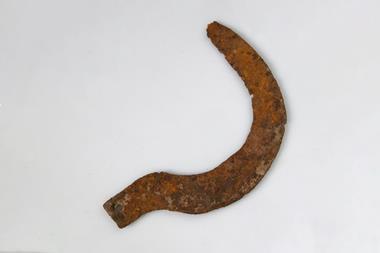Many of the earliest Anglo-Saxon silver coins were made from Byzantine plates, while later coins used silver from a mine in France. The findings from a team of UK and Netherlands-based researchers resolves a longstanding mystery about the origins of the material used in early English coins.
The researchers analysed the silver used in 49 coins from early medieval England, Frisia – on the coast of what are now the Netherlands and Germany – and Francia, which roughly corresponds to modern France.
University of Oxford archaeologist Jane Kershaw, who led the project, says that the results show that Anglo-Saxon rulers ‘had the status and means to acquire prestige items from the Byzantine Empire’.
The project builds on work Kershaw’s research group has been carrying out for five years to develop chemical tests to assess the origins of silver. ‘We’ve done it for Islamic silver, Viking silver and now also for early Anglo-Saxons silver,’ Kershaw says. ‘Knowing where the silver came from can shed entirely new light on past cultures.’
Kershaw and her coworkers examined coins from the Fitzwilliam Museum in Cambridge that were made between the years AD 660 and 820. They observed a switch in Anglo-Saxon coins after about AD 750, from metal obtained mainly by melting down silver plates from the Byzantine Empire to silver from Melle near Poitiers, a mine that supplied the Merovingian dynasty and later the Carolingians.

The team notes that the use of Melle silver became fully established after the coinage reforms of Charlemagne in AD 792 and 793. According to Kershaw, the switch shows the increasing rarity of Byzantine plates.
‘Byzantine silver production is drying up in the later seventh century … the earlier stocks that were used were likely in England for many decades – even a century – before they were melted down to make silver coins,’ she says.
The researchers used a combination of lead isotope and trace element analysis to determine the coins’ chemical signatures, and compared them to ore sources and other silver stocks.
Gold and bismuth were especially important indicators, Kershaw says, because they remained unchanged throughout the melting process and corresponded to the source of the silver. Some of the earliest Anglo-Saxon pennies had high levels of gold, which indicated silver that had been gilded. But ‘after 750 we see a new, low-gold stock that can be linked to Melle,’ adds Kershaw.
‘This is ground-breaking research whose results both clarify and challenge our thinking on the inception of a multi-economy and early post-Roman Europe,’ says consultant archaeologist Chris Scull, who wasn’t involved in the project. He notes the study is ‘confirmation that English rulers in the seventh century were turning ancestral treasure into coinage’.
‘This indicates profound changes in the interlinked systems of rulership and economics at that time, but also points to the wealth accrued by earlier generations,’ he says.
Archaeologist John Naylor from Oxford’s Ashmolean Museum, who also wasn’t involved, says some researchers had suggested previously that some Anglo-Saxon coins were made from Byzantine silver plates. The latest study gives fine-grained detail about just when that happened. ‘We now have really good scientific evidence that shows first this Byzantine plate being used, and then after that Frankish silver,’ he says. ‘That is really important.’
References
J Kershaw et al, Antiquity, 2024; 0 (0):1-16 (DOI: 10.15184/aqy.2024.33)












No comments yet